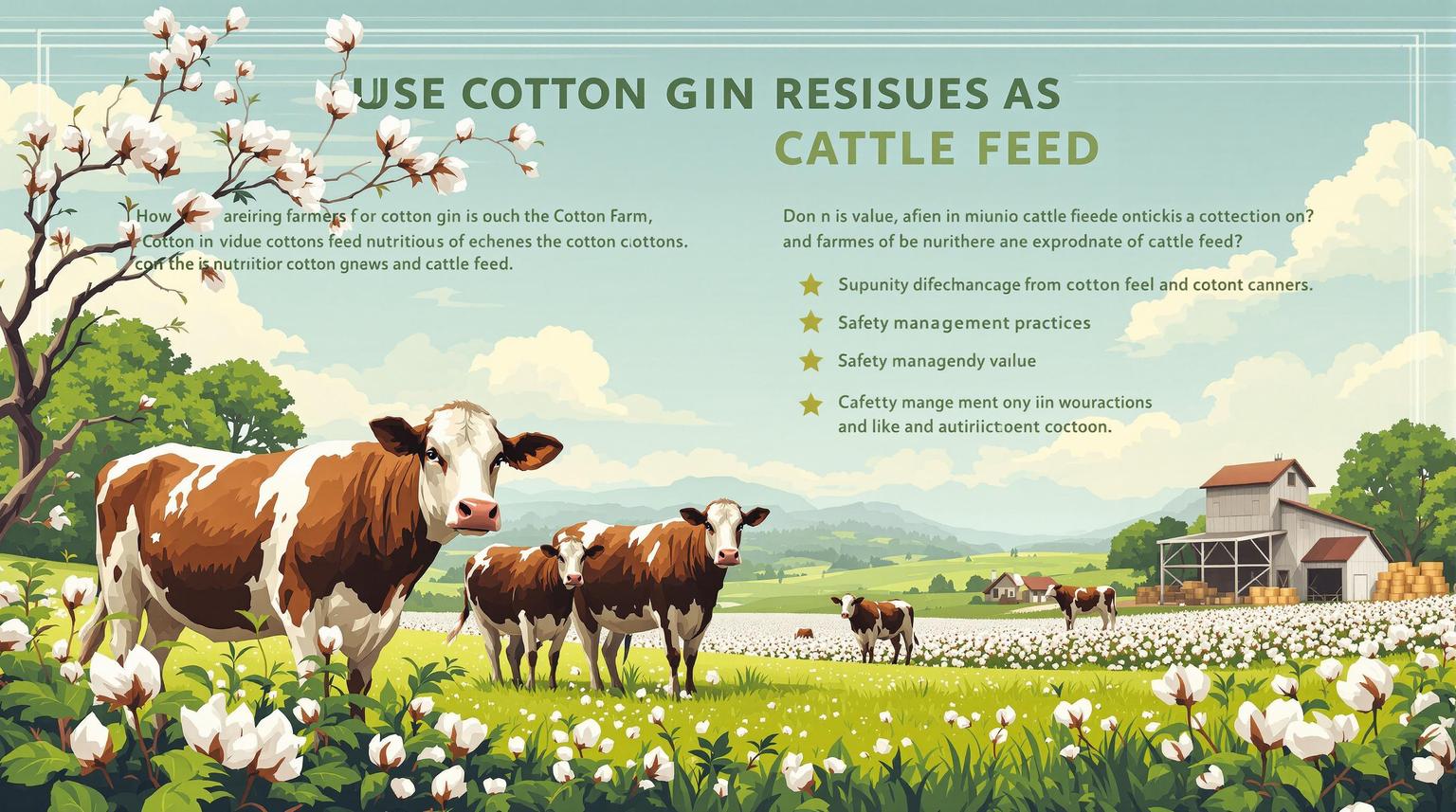Cotton root rot management is a persistent challenge for growers across the Belt, where this soilborne fungal disease can slash yields by 20-50% in infested fields, turning vigorous stands into wilted patches that compromise boll development and fiber quality. For experienced producers familiar with scouting thresholds and varietal tolerances, effective cotton root rot management hinges on integrating cultural practices, resistant hybrids, and targeted interventions to preserve root integrity during squaring and boll fill. Unlike foliar pathogens that signal early, root rot caused by Phymatotrichopsis omnivora lurks belowground, thriving in alkaline clays with poor drainage and high temperatures above 80°F, often evading detection until irreversible damage sets in. In regions like the Southwest where summer heat amplifies infection, proactive cotton root rot management not only safeguards current seasons but builds long-term soil resilience against recurring outbreaks. This guide explores diagnostic tools, preventive rotations, and control options backed by extension trials, empowering seasoned operators to minimize losses and sustain 1,200-1,500 pounds per acre. For foundational insights, link to our cotton disease management post on cottongins.org.
Understanding Cotton Root Rot: Pathogen and Environmental Triggers
Cotton root rot management begins with grasping the biology of Phymatotrichopsis omnivora, a resilient fungus that persists as sclerotia in soil for decades, infecting roots via strand-like rhizomorphs that girdle vascular tissues and halt nutrient flow. In susceptible upland cottons, infection spikes at soil pH 7.0-8.5 and temperatures 82-95°F, conditions prevalent in calcareous loams where calcium stabilizes fungal structures. Extension data from Texas A&M indicates annual losses exceeding $100 million in the U.S., with hotspots in Arizona, New Mexico, and Oklahoma where irrigation exacerbates spread through water movement.
From a systems view, cotton root rot management addresses compounding factors like nematode co-infections, which weaken roots and facilitate entry—trials show 15-25% yield amplification when nematodes are controlled pre-plant. Veterans scout for predisposing stressors: Compacted zones limit root escape, while over-fertilization with nitrogen promotes lush growth vulnerable to decay. Regional variations matter—Southeast humidity delays sclerotia activation, while arid Plains favor rapid strand growth. By mapping infestation history via GPS soil sampling (target 10-20 cores per 20 acres), growers pinpoint high-risk zones for tailored cotton root rot management, averting blanket treatments that erode profitability.
Identifying Symptoms and Diagnosing Cotton Root Rot
Timely diagnosis underpins successful cotton root rot management, as symptoms mimic drought or nutrient deficiencies, often emerging mid-season when intervention windows narrow. Initial signs include chlorotic leaves and wilting despite adequate moisture, progressing to bronzed foliage and defoliation in circular patches 10-50 feet wide—extension surveys note 30% misdiagnosis rates among novices.
Root inspection confirms: Infected taproots exhibit dark, rotted cortices with white, fan-like fungal strands, distinguishable from Fusarium by the absence of vascular browning. Lab assays via selective media isolate the pathogen, but field kits for sclerotia counts (threshold >5 per 100g soil) enable rapid decisions. In Pima cottons, symptoms accelerate due to shallower roots, with boll shed up to 40% in severe cases.
For precision, integrate remote sensing: NDVI imagery from drones flags stressed zones early, correlating with 80% accuracy in trials. Tissue sampling during pinhead square stage reveals early electrolyte leakage, signaling infection before visible wilt. These diagnostics in cotton root rot management empower proactive fungicide timing, curbing spread before peak boll load.
Preventive Cultural Practices for Cotton Root Rot Management
Cultural tactics form the foundation of sustainable cotton root rot management, disrupting fungal lifecycles without chemicals. Deep tillage (12-18 inches) post-harvest fractures sclerotia, exposing them to desiccation—studies show 20-30% population reductions in heavy soils.
Rotations with non-hosts like sorghum or corn deplete inocula by 40-60% over 2-3 years, per USDA data, while avoiding legumes that sustain the fungus. Amend pH with sulfur to 6.0-6.5 in high-risk fields, inhibiting strand formation without yield penalties.
Planting density adjustments—60,000-80,000 per acre—promote airflow, reducing humidity that favors infection. Cover crops like rye biofumigate via allelochemicals, slashing sclerotia viability by 25%. In irrigated systems, deficit scheduling during vulnerable stages conserves water while stressing the fungus.
These low-input strategies in cotton root rot management accrue benefits over cycles, with ROI manifesting in 10-15% yield stability.
Selecting Resistant Cotton Varieties for Root Rot Tolerance
Varietal resistance elevates cotton root rot management, with breeders incorporating tolerance genes to limit fungal colonization. Hybrids like PHY 480 W3FE exhibit partial resistance, sustaining 15-20% higher boll retention in infested plots per extension trials.
Key traits include robust rooting depth (>3 feet) and rapid establishment, enabling escape in short-season windows. Screen regional performance data—Delta varieties prioritize Fusarium synergies, while Plains focus heat tolerance.
Pair with Bt stacks for dual protection against co-pests. Resistance durability varies; rotate lines to delay breakdowns, as seen in 5-7 year efficacy drops. Seed treatments with azoles enhance seedling vigor, adding 5-10% stand in thresholds.
For Pima, tolerant lines like DP 348 RF minimize cysts. Annual breeder updates refine selections, optimizing cotton root rot management for locale-specific pressures.
Soil Amendments and Biological Controls in Cotton Root Rot Management
Amendments and biocontrols offer eco-friendly adjuncts to cotton root rot management, fostering suppressiveness. Organic matter via compost (5-10 tons/acre) boosts microbial antagonists, reducing sclerotia by 20-30% in trials.
Beneficial fungi like Trichoderma virens colonize rhizospheres, parasitizing strands with 40-50% efficacy in drip applications. Mycorrhizae enhance tolerance, buffering uptake losses by 15%.
Chitin amendments stimulate chitinases, degrading fungal walls. Integrate with scouting; moist, 75-85°F soils maximize activity. For organics, these in cotton root rot management cut chemicals 20-40%, aligning with certifications.
Chemical Controls: Fungicides and Soil Fumigants for Root Rot
When thresholds surpass, fungicides provide targeted cotton root rot management. Flutriafol (Group 3) at-plant suppresses early infection, yielding 10-15% gains in hotspots.
Propiconazole drenches mid-season halt spread, but rotate modes to combat resistance—alternate triazoles with SDHIs. Rates: 0.2-0.4 lbs ai/acre banded.
Fumigants like metam sodium (30-50 gal/acre) pre-plant penetrate deep, knocking populations 60-80%; shank for coverage.
Monitor via bioassays; retreat if >20% survival. In cotton root rot management, confine to zones, integrating with bios for sustainability.
Integrated Cotton Root Rot Management Programs
Integrated pest management (IPM) unifies tactics for holistic cotton root rot management. Layer resistance with rotations—e.g., corn-cotton cycles drop inocula 50% over monocropping.
Threshold-based scouting triggers treatments, using GIS for precision. Economic models: IPM saves $40-80/acre versus solo chemicals.
Extension tailors: Southwest emphasizes fumigants, Southeast rotations. Annual soil testing guides amendments.
This framework in cotton root rot management sustains 1,100+ lb/acre with 30-40% input cuts.
Monitoring and Record-Keeping for Ongoing Root Rot Control
Tracking elevates cotton root rot management, logging trends for predictive tweaks. Digital apps map patches, correlating with weather for outbreak forecasts.
Annual sclerotia sampling monitors shifts; >10/100g prompts rotations. These records inform adaptive decisions in cotton root rot management.
Economic Analysis of Cotton Root Rot Management Strategies
Cost-benefit guides cotton root rot management: Sampling/labs $15-25/acre, offset by informed avoidance of 100-200 lb losses.
Resistant seeds premium $20-30/acre, recouped via 10-15% gains. Fumigants $100-150/acre suit severe; IPM totals $50-100/acre, boosting nets $120-250.
Tools model; low-pressure favors culturals. Prioritize ROI in cotton root rot management.
| Strategy | Cost Estimate | Benefits | Yield Impact |
|---|---|---|---|
| Soil Sampling | $15-25/acre | Precise thresholds | Informed action |
| Resistant Varieties | $20-30/acre premium | Reduced infection | +10-15% |
| Rotations/Amendments | $20-40/acre | Lifecycle break | Stable |
| Biologicals | $25-50/acre | Eco-suppression | +5-10% |
| Fungicides | $50-100/acre | Rapid control | +15-20% |
Adapt for economics.
Regional Variations in Cotton Root Rot Management
Tailor cotton root rot management regionally: Southwest combats via fumigants; Mid-South rotations.
Challenges like variable efficacy resolve with hybrids. Costs? Grants aid. Labor for sampling; tech streamlines.
Solutions ensure viability.
Emerging Innovations in Cotton Root Rot Control
Genomics breeds ultra-tolerant lines; RNAi silences genes.
AI predicts via sensors, optimizing applications.
Innovations advance cotton root rot management.
In summary, robust cotton root rot management protects yields through integration. Sample annually, select resistants, rotate wisely, and adapt regionally. Monitor economics for refinements. Link to our soil health post for amendment synergies. What's your root rot approach?


